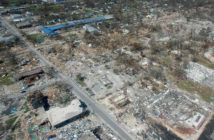According to a new report in the journal, Lancet Planetary Health, one in eight deaths in India are due to pollution. It is estimated that 1.24 million deaths can be attributed to air pollution in the country. Last year alone, most people in India died from air pollution than from tobacco use.
Results:
The study found that 77 per cent of the country’s population is exposed to harmful levels of particulate matter, which far exceeds Indian government standards. This limit is four times the one recommended by the World Health Organization.
But air pollution is a complex environmental issue. Sources can realistically come from anywhere like car exhaust, industrial emissions, burning of crop residues, and construction dust, among other things. Then there is also the use of charcoal, wood, and dried manuer, which is used for heating, which creates harmful pollution.
Pollution is most intense in northern India and the country’s capital, New Delhi. This occurs mainly in the winter months because temperatures drop and wind speeds fall, trapping pollutants and creating haze.
Diseases Due to Air Quality:
The study found a direct link between air pollution and diseases caused by air pollution. These include: lower respiratory infections, chronic inflammatory lung disesase, strokes, diabetes, heart attacks, and lung cancer.
Another study found that Indians lost an average of 1.53 years of life expectancy because the air had particulate matter that is considered most harmful to human health. These particles are less than 2.5 micrometers in diameter and can go deep inside the human lung.
Pollution in general has such a dire impact on life expectancy in India, cutting 5.3 years from the average person’s life.
What’s India Going to Do?
Indian policymakers are showing strong interest in the results, indicating a paradigm shift in perspectives on environmental-related health issues from just the year before. The idea that India was just a blanket of open space ready to be devoured by the industrialism that’s ultimately fuelling them is also something they don’t want to choke on.




